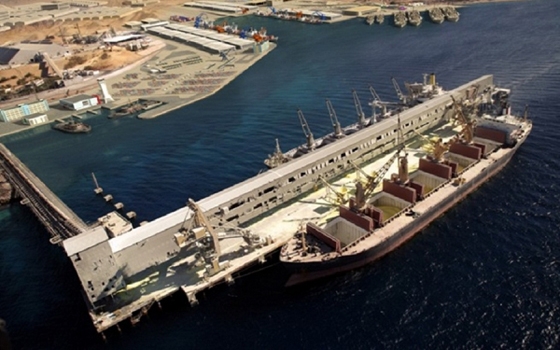The arrival of the first liquefied natural gas (LNG) shipment from Qatar at Aqaba Port last month signaled a major step forward for Jordan’s energy sector, while also putting the country’s plans for developing transport infrastructure firmly in the spotlight.
Jordan received its first cargo of LNG at the purpose-built Sheikh Sabah Al Ahmad Al Sabah Terminal, named after Kuwait’s emir, on May 25. The gas supplies are set to play a major role in the country’s efforts to meet its pressing energy needs. However, the heightened activity at Aqaba has underscored the need for Jordan to improve connectivity between the country’s only port and the north, where the capital and many businesses are located, and reduce the strain on its roads.
Driving the distance
Aqaba Port was responsible for around 55% of Jordan’s entire export trade in 2013, while handling some 73% of total imports during the year, according to the Department of Statistics. The area is also home to the Aqaba Special Economic Zone, an industrial site including airport and maritime facilities, factories, workshops and businesses in and around the Red Sea city.
However, given the instability in neighboring Syria and Iraq, pressure is likely to increase at Aqaba due to the fact that overland trade has been largely paralyzed by border attacks from insurgents.
In April, Jordan closed its only working border crossing with Syria at Jaber, with the loss of trade routes hurting both importers and exporters. This has forced Jordanian traders with commitments in Syria or Iraq to rely on sea routes either via Haifa in Israel or on the long journey through the Suez Canal to Aqaba.
While the port itself is facing greater traffic, the two overstretched highways which link the port to the north of the country – where most of Jordan’s population is located in or around the capital Amman – are also under strain, leading to calls for alternative solutions.
Rail has emerged as the front-runner in discussions aimed at exploring alternative forms of transport. Jordan already possesses two rail networks, both of which are managed by government-owned entities. The Hejaz Railway Corporation (HRC) operates 217-km of track, while the second 293-km line falls under the responsibility of Aqaba Railway Corporation (ARC).
HRC’s main route runs from the Syrian border to the Modawara crossing on the Saudi border, although the conflict in Syria has severely restricted the service. The ARC, meanwhile, transports cargos of phosphates from mines in the southern interior to loading bays at Aqaba.
Making connections
The government is now looking to develop the network further, with the aim of connecting the port with the capital. “The first phase of the railway network would be to connect Aqaba and Amman,” the transport minister, Lina Shbeeb, told OBG recently. “This would include a connection to Ma’an, where we would like to have a dry port.”
The rail link would speed up the process of getting goods from Aqaba to Amman, the minister said. In another move aimed at reducing delays, the planned dry port at Ma’an is set to be a designated hub for clearing goods, away from the main site. The minister also told OBG that the government was “eager to engage the private sector for projects regarding the railway network.”
The Aqaba-Ma’an-Amman project is the cornerstone of a JD2bn ($2.8bn) plan for the network announced by Shbeeb back in April. The rollout for the three-part scheme is set to begin with the construction of the Aqaba-Ma’an stretch and the Ma’an dry port, followed by the Ma’an-Amman phase of the project. Phase three will link the capital to Mafraq, where another dry port is to be built.
The railway project has widespread backing among transport and logistics firms. Aside from improving connectivity, the service is expected to reduce transport costs, making Jordanian exports more competitive and imports cheaper. The dry ports will also go some way towards cutting clearance times, while also bringing new investment and jobs to Ma’an and Mafraq.
Despite the positives, Jordan’s network plan faces some uncertainty. Established road hauliers, particularly those in Ma’an, may see rail as unwelcome competition. In addition, the authorities’ success in securing private investment for such a large infrastructure project could be determined in part by what is offered in terms and conditions, with much hanging on the shape of the contracts the ministry will be drawing up.
Yet the need for the railway is widely acknowledged, furthermore the government’s commitment to pushing it through is an encouraging sign for both investors and future transport users.
Oxford Business Group
25 June























































